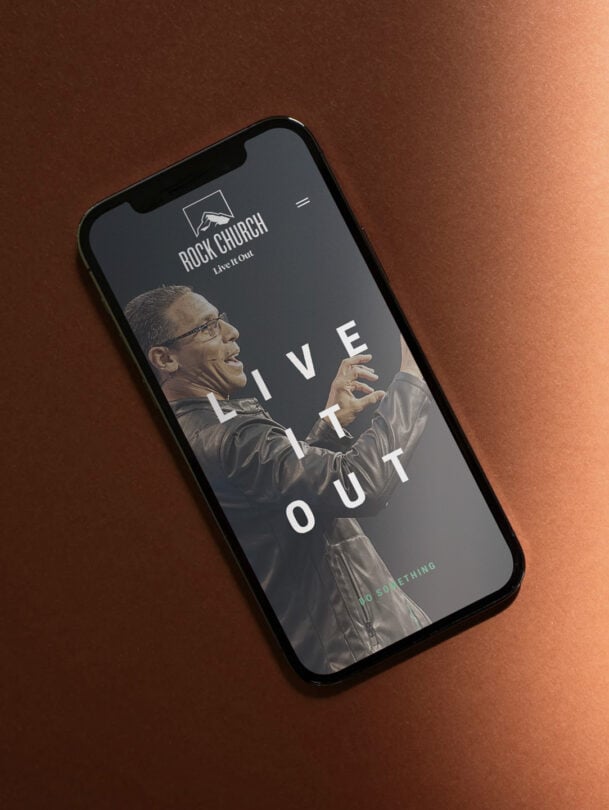- Awareness: How many people are aware of a given brand?
- Associations: What thoughts are commonly paired with the brand in the mind of a customer?
- Sentiment: What are the sentiments (positive and negative) that customers have paired with the brand?
- Perceived Quality: What is the reputation a brand has for producing quality goods?
- Loyalty: How likely are customers to repurchase from a brand after their initial purchase?
- Advocacy: How likely are customers to recommend a brand/product/service to a friend or colleague?
- Recall: Of people who are exposed to brand work, what % can later recall which brand was being advertised and/or what their positioning was
- Consideration: What % of people would consider purchasing from the brand
- Purchase Intent: What % of people intend to purchase from the brand?

Metrics Misalignment: The best way to evaluate your Brand Initiatives
average read time: 7 min
Articles
March 19, 2022
As brand work continues to be an undeniably powerful asset for companies, it raises an important question: “How can I clearly demonstrate the impact of brand initiatives with quantifiable results?”
When strong brands are built and cultivated, we see their ability to influence growth internally, by building brand equity and company success, and externally, by disrupting the market, fostering loyal fans, and influencing culture. However, when it comes time to pin down the exact value of a brand, it can be tricky. By nature, strong brands influence human feelings and perception — two things that are very subjective and therefore frustrating and difficult to value.
As brand work continues to be an undeniably powerful asset for companies, it raises an important question: “How can I clearly demonstrate the impact of brand initiatives with quantifiable results?”
To measure the impact of brand work, it’s important to first understand what brands need to be successful: exposure and time.
Revamping Your Brand Checklist
Want to know the keys to change management success for your next rebrand? Download our checklist with a step-by-step framework to ensure a smooth transition and maximize the chances of achieving your rebranding goals.

Exposure
You could have the most compelling brand work in the world, but if no one sees it, it’s not going to elicit the impact you desire. The success of branding efforts is directly linked to how many people interact with the new brand (i.e. how much money is spent on paid media, promotions, and communications).
Time
Establishing a strong brand doesn’t happen overnight. Some people use brand initiatives as a tool to get short-term, if not immediate, financial results. The reality is, brand initiatives are not a quick fix to boost revenue, but rather serve as building blocks for establishing a strong brand foundation – it’s an investment.
At BLVR®, we strive to get a full picture of the impact of brand work by following a 4 step process:

STEP 1: BUILD
The first step to crafting a measurement plan for brand initiatives is to identify the Key Performance Indicators (KPIs). A KPI is defined as “a measurable value that demonstrates how effectively a company is achieving key business objectives.” Here are some questions to ask yourself when considering KPIs for your brand, company, and customer:
What are the KPI’s for the brand?
Brand initiatives most directly impact brand equity by strengthening key areas like awareness, associations, perceptions, loyalty, and assets.
What are the KPI’s for the company?
Beyond immediate brand impact, brand initiatives have the power to influence the company’s success in two ways: financially and culturally.
Financial:
- Average monthly revenue: What is the average revenue generated for the month
- Profit: What are the profit margins?
- Share price: How much would it cost to buy one share in a company
- Sales growth: % increase of sales over a defined period
- Cost per acquisition: What is the cost to acquire a new customer?
- Average transaction value: What is the value of an average transaction?
Culture:
- Engagement: How engaged are employees at company events?
- Satisfaction: How satisfied are employees with the company, their team, their role? You can gauge this by asking staff to rate their satisfaction in working at the company and their likelihood to recommend a brand/product/service to a friend or colleague.
- Retention/Turnover rates: What is the % of staff retained over a set period of time?
- Recruitment: Is the company able to attract the talent needed?
What are the KPI’s for the customer?
Beyond building brand equity and company success, how customers engage with a brand can be a key indicator for understanding the value of brand initiatives. Here are some helpful KPIs to consider when measuring the impact on your customers. – Acquisition: How frequently are you winning a new customer?
- Engagement: How engaged are employees at company events?
- Satisfaction: How satisfied are employees with the company, their team, their role? You can gauge this by asking staff to rate their satisfaction in working at the company and their likelihood to recommend a brand/product/service to a friend or colleague.
- Retention/Turnover rates: What is the % of staff retained over a set period of time?
- Recruitment: Is the company able to attract the talent needed?
STEP 2: GATHER
Once you build a measurement plan it’s time to start gathering the data to establish a baseline which helps illuminate where you stand on each KPI before your brand initiatives are put into play. This phase can seem overwhelming since data can come from a range of sources. While there are many avenues for gathering data, here are a few things we consider to make the process for streamlined:
What data do we already have?
It’s important to take the time to gather internal reports and determine what you already have, like financial sales/profit reports, employee satisfaction surveys, and any website analytics.
What data do we still need?
Once you know what data you currently have access to it becomes easier to identify what data you still need to gather. You may discover that you may need to find new ways to gather all the data you need.
What tools could I use to help me?
Luckily there are plenty of tools out there to help capture data for brand, company, and customer KPIs, like:
What data do we already have?
It’s important to take the time to gather internal reports and determine what you already have, like financial sales/profit reports, employee satisfaction surveys, and any website analytics.
Brand
- Google Analytics
- Social Listening Tools e.g., Brandwatch or Hootsuite
- Brand Study Vendors e.g., Hall & Partners or Millward Brown
- NPS Score Vendor e.g., AskNicely, GetFeedback, NICE Satmetrix, and Qualtrics
- SEO Trackers e.g., SEMRush
- Review Sites e.g., Yelp, Google
- CRM Trackers e.g., Monday.com or Zendesk
Company
- Internal Survey Tools e.g., Google Sheets, Google Forms, SurveyMonkey
- Employee Review Sites e.g., Glassdoor, LinkedIn
Customer
- External Survey Tools e.g. Google Forms, SurveyMonkey
- Google Analytics for Website Analytics and Purchase Data
- Review Sites e.g., Yelp or Google
Who should be in charge of gathering all the data?
Gathering data for brand KPIs usually falls on the shoulders of brand or marketing teams. However, since we suggest pulling data for the brand, company and customer from internal and external sources, there may be people across departments that need to be involved. With such a range of data to collect, it’s important to have clear expectations of what responsibilities fall on certain teams or people. Implementing a RACI (Responsible, Accountable, Consulted, Informed) chart or responsibility assignment matrix could be a helpful way to manage this. This style of chart/matrix allows you to identify who will be responsible, accountable, consulted or informed for tasks and decisions throughout the project. It can help delegate, set expectations, and create transparency to move the project forward.
How should all the data be held?
As you take the time to gather data, it’s important that you can store and save key information in a way that is easily accessible. Since raw data and reports can come in different file types and sizes, we recommend having a designated collaborative storage space on software like Google Drive, iCloud, or Dropbox, instead of saved locally on one person’s computer.
STEP 3: TRACK
Now that you have a baseline, it’s time for your brand initiatives to make a mark on the world. In a world of immediate results and instant gratification, branding initiatives can be tricky to track since the work can take longer to impact change or foster ROI (return on investment). Unlike marketing initiatives that may see faster results, brand work requires a measurement plan that tracks initiatives over a longer period of time to show impact across a variety of KPIs. To help navigate some of the ambiguity of tracking brand initiatives over time, here are some of the best practices we follow: – Some impact is immediate. When a brand initiative is launched, it usually makes a splash and grabs attention, so you can see an immediate lift in customer engagement on social and web. Luckily, data sources to measure engagement, like Google Analytics and social media analytics, can be monitored hourly, daily, weekly, or monthly, due to easy access and automation, making it easy to see any short-term impact. – Majority of impact is long term and lasting. The majority of brand, company, and customer KPIs, like brand perception, company finances, customer satisfaction, take a bit longer to see impact. Measuring these KPIs also may require more resources and energy to gather, making it more beneficial to conduct every quarter, 6 months, or annually. Reviewing brand, company, and customer KPIs at this rate allows the time for the initiatives to really make a lasting impact.
STEP 4: ANALYZE
Sifting through excel spreadsheets of data is not everyone’s cup of tea, but taking the time to analyze the performance of each KPI allows you to identify significant changes, highlight trends, and concretely see the impact of individual initiatives. Once you uncover how branding initiatives impact your brand, company, and customer, you unlock the opportunity to justify future investments in branding that optimize what is working and create more positive growth.
Fostering a strong brand through brand development, design, and activation can ultimately create opportunities to be disruptive in the category, more relatable to customers, and appeal to employees and new talent. On a mission to cultivate a unified, unique, and strong brand, it’s important to build a measurement plan, gather data, track impact, and analyze results, to make sure we get a full picture of the value each initiative brings. Even beyond understanding the impact, it also provides a roadmap for moving forward and equips you with the information you need to make the best decisions for your brand, company, and customer.
If you have a project that we can help with, please get in touch with us. We’re experts in measuring the power of brand initiatives and would love to help make your brand shine.
About the author(s)
01
© BLVR
SD / CA




